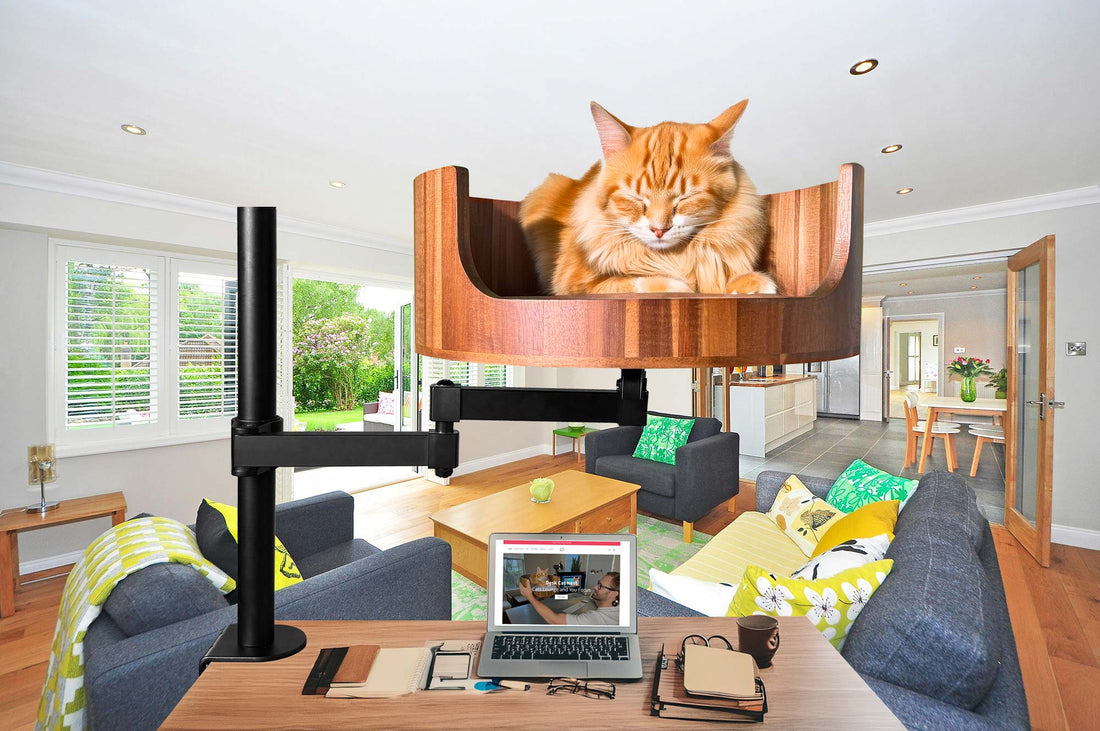
Why Do Cats Scratch After Eating: Understanding the Behavior
Share
Ever noticed your cat scratching relentlessly after finishing a meal? This common behavior often goes unnoticed or misunderstood by cat owners, but it actually serves an important purpose for our feline friends. In this article, we will delve into the reasons behind why cats scratch after eating, shedding light on this seemingly mysterious behavior.
Desk Cat Nest is a platform dedicated to providing insights into cat behavior and helping cat owners better understand their furry companions. By exploring the reasons behind why cats scratch after eating, we aim to educate readers on the natural instincts and behaviors of cats. From marking territory to aiding in digestion, scratching after a meal serves multiple functions for cats that can be fascinating to learn about. Join us as we uncover the secrets behind this behavior and gain a deeper appreciation for the intricate world of cats.
1. Cats scratch after eating as a way to mark their territory and leave behind scent markers.
2. Scratching also helps cats stretch their muscles and relieve stress or anxiety.
3. Providing a scratching post near the feeding area can redirect this behavior to a more appropriate location.
4. Understanding the reasons behind scratching can help prevent damage to furniture and objects in the home.
5. Regular playtime and mental stimulation can also help reduce the need for excessive scratching after meals.
## Importance of Scratching for Cats
Scratching is a natural behavior for cats that serves several important purposes. Not only does it help them sharpen their claws and remove the dead outer layer, but it also allows them to mark their territory with scent glands located in their paws. By scratching after eating, cats are reaffirming their territory and asserting their presence in the home.
## Instinctual Behavior
Scratching after eating is an instinctual behavior that dates back to when cats were wild animals. In the wild, cats would scratch trees or other objects to mark their territory and communicate with other cats. Even though domesticated cats no longer need to mark their territory for survival, the behavior remains ingrained in their DNA.
## Sensory Stimulation
Scratching after eating provides sensory stimulation for cats and helps them relax after a meal. Cats have scent glands in their paws that release pheromones when they scratch, which can have a calming effect on them. By scratching after eating, cats may be trying to destress or alleviate any anxiety they may be feeling.
## Redirected Scratching Behavior
Sometimes, cats may scratch after eating as a way to redirect their scratching behavior. If they are feeling frustrated or bored, they may turn to scratching as a way to release pent-up energy. Providing cats with appropriate scratching posts or toys can help redirect this behavior and prevent them from damaging furniture or other objects in the home.
## Addressing Inappropriate Scratching
If your cat is scratching inappropriately after eating, it's essential to address the underlying reasons for this behavior. Providing your cat with appropriate scratching surfaces, engaging in playtime to release excess energy, and creating a stimulating environment can help curb this behavior. If the scratching persists or causes damage, it may be beneficial to consult with a veterinarian or animal behaviorist for further advice.
Frequently Asked Questions
Why do cats scratch after eating?
Cats scratch after eating as a natural behavior. Scratching helps them remove the dead outer layer of their claws, stretch their bodies, and mark their territory with scent glands in their paws.
Will the Desk Cat Nest help prevent my cat from scratching after eating?
The Desk Cat Nest provides a designated scratching area for your cat, which can help redirect their scratching behavior from furniture or other unwanted surfaces. Providing a scratching post can help satisfy your cat's natural instincts and reduce scratching incidents after eating.
Is the Desk Cat Nest suitable for all cats?
The Desk Cat Nest is designed to be suitable for most cats. However, it is essential to consider your cat's size and scratching preferences when choosing a scratching post. Some cats may prefer vertical scratching posts, while others may prefer horizontal surfaces. Observing your cat's scratching behavior can help determine if the Desk Cat Nest is the right solution for them.
How can I encourage my cat to use the Desk Cat Nest?
Encouraging your cat to use the Desk Cat Nest can be done through positive reinforcement. Place treats or catnip near the scratching post to entice your cat to approach and interact with it. You can also gently guide your cat's paws to the post and reward them with praise or treats when they use it. Consistency and patience are key to helping your cat form a positive association with the Desk Cat Nest.
In conclusion, providing your cat with a Desk Cat Bed is a valuable choice to help prevent scratching after eating. This comfortable and secure bed will create a peaceful environment for your cat to relax and digest their food, reducing the likelihood of stress-induced scratching behaviors. Additionally, the elevated design of the Desk Cat Bed allows your cat to comfortably eat without feeling threatened or anxious, promoting better digestion and overall well-being. Invest in a Desk Cat Bed today to provide your feline friend with a safe and soothing space to enjoy their meals.



















































